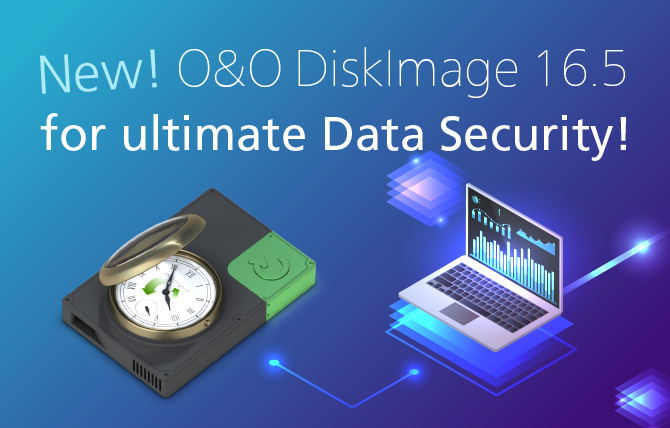A regular backup is still something that many users prefer to avoid. At least that is until they suffer their first loss of important files as a result of software, hardware or user error: that’s when it becomes crystal clear just how valuable a reliable and up-to-date backup really is! O&O DiskImage means you can restore old files, applications or an entire PC when something goes wrong, allowing you to turn back the clock any time you need to. But what method do you choose and why?
A Full Backup
With a full backup, all data is backed up to a target drive or disk with each backup. This means that all documents and files are stored in one file, which makes working with the backups and managing them simple.
Pros:
Creating such a backup is quicker than a differential or incremental backup.
Managing them is easier as only one file needs to be restored.
Cons:
A regular full backup requires much more space than a differential or incremental backup.
A Differential backup
With a differential backup, only the changed or new data since the last full backup will be backed up. This means of course that an initial full backup is required first so that the software knows which documents are new or changed. When restoring such a backup both the “base” backup and the differential backup files need to be restored.
Pros:
A regular differential backup requires much less space than a full backup.
Cons:
Restoring such a backup is slower than a full backup.
Managing them is harder as two files are required.
An Incremental backup
An incremental backup also just backs up new or changed documents, but it bases these changes on the previous incremental backup as opposed to the initial full backup. Only the first ever incremental backup is based on the initial “base” backup.
Pros:
A regular differential backup requires much less space than a full backup or differential backup.
Cons:
Restoring such a backup is slower than a full backup or differential backup.
Managing them is more complex as all the files from a backup “chain” are required for a restoration.
Why you must backup your data!
When you back up your whole PC or selected data, O&O DiskImage will either save all personal files or hard drive information and individual settings too. This not only protects irreplaceable files but, in a worst case scenario, also saves you the trouble of having to carry out a time-consuming new setup of programs and the Windows operating system. Even if you need to restore a PC nackup onto a new PC with different hardware, O&O DiskImage 16 can do this no problem. It is imperative you have a safety copy of your precious data.
Test our award-winning backup program free for 30 days and see for yourself what this product can do for your security. Or buy now, with a 30-day money back guarantee:
